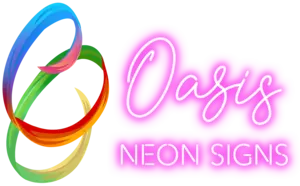
The Importance of Lighting in Retail Stores: Boost Sales and Customer Experience
Share
The importance of lighting in retail stores plays a vital role, which serves more than functionality. It deeply influences their environments and the behaviours of customers. Well-designed lighting in a retail store can enhance the visibility of products, create a consumer-friendly environment, and eventually boost sales. If you are a fashion store, grocery store, or tech outlet owner, perfect lighting design can transform the shopping experience, guide customers through your store, and increase the likelihood of a purchase.
In this article, we are going to discuss different kinds of lighting in retail stores, illuminating their necessity in retail, and explaining how lighting helps to improve both the customers' experiences and that of the business itself.
The Role of Lighting in Retail Stores
Retail store lighting can be equated to the eyes of a person. It creates the atmosphere in-store and contributes to how customers perceive the products therein. The eye catches the ambient mood, attractiveness of the product, and several other ways of directing customers toward purchasing a product. It does all this by focusing attention on specific products in the store, creating atmospheres for a positive association with the brand, and directing customers toward areas of the store that encourage purchasing.

Customers are physically drawn to bright light. Lighting like this serves the purpose of defining the identity of any retail space-whether it feels vibrant and energetic or quite intimate and subdued. On a hazy light day, shoppers feel the area is ignored or, at least, that it is unfriendly. Such areas are reserved for not many shoppers, which lowers footfall and generates bad perceptions of the brand. Proper lighting can, in turn, create a shopping experience that is fun, and more comfortable, and thus immensely increases the chances of purchase.
Types of Lighting in Retail Stores
Three types of illumination generally used in retail settings are ambient, accent, and task lighting, cleverly coordinated to reflect different purposes and blend harmoniously to form a functional and visually appealing space. Let us now take a closer look at the various lighting types and how they can be applied to your store.
1. Ambient Lighting in Retail Stores
Ambient lighting is defined in various ways across different manuals. Its general meaning is reflected in stores, however, as it envelops the entire interior. This first layer of lighting establishes or augments the spirit of the whole space. The intensity of ambient lighting establishes the comfort level of the atmosphere, allowing customers to move freely throughout the store without any strain on the eyes.
The best lighting for ambient purposes in retail stores is bright enough to give visibility throughout but soft enough not to cause glare. Harsh light makes customers feel claustrophobic; dim light, on the other hand, renders them uncomfortable. Most stores use LED lights for ambient purposes since they provide a steady and economical light source.
The management of ambient lighting will depend on the layout, the ceiling style, and the color of the store. If there are high ceilings, more powerful lights will be needed or multiple light sources will be required, whereas in smaller spaces, softer light is called for. Here are some ambient lighting ideas that can help you refine the overall atmosphere of your store while ensuring customers feel comfortable and visually guided throughout the space.
Accent Lighting in Retail Stores
Accent lighting in retail stores is a way to illuminate certain products, displays, or areas of the store. While ambient lighting could be termed as lighting complementing the entire space, accent lighting is viewed as a way to create focal points. Accent lighting is, thus, particularly suited for drawing attention to high-margin or promotional products, special displays, or exclusive items meant to be noticed by consumers.
Above all accent lighting in retail stores should be done to ensure that the lighting effects on that particular product without creating shadows or distractions. The lighting will focus on the exact specification of the product or display while contrasting it with the ambient lighting around it. For example, spotlights or track lighting can highlight important day merchandise while pendant lights can add a nice effect on display areas.
Thus, accent lighting not only increases the visibility of certain items but also provides a sense of drama and excitement to the shopping experience. It brightens and adds dimension and texture to the environment, making the shopping experience more dynamic.
Task Lighting in Retail Stores
Task lighting in retail stores illuminates areas of specific activity, be it, checkout counters, fitting rooms, or areas where labels or product descriptions must be read, in a bright and focused manner. This type of lighting ensures both employee and customer comfort during task execution.
Such light sources should be evenly distributed to allow detailed work to be carried out in their illumination. For instance, bright lights display product descriptions clearly at checkout counters, while intense fitting-room lights allow customers to check their appearance at every conceivable angle.
How does lighting impact customer experience and sales?
Good retail lighting creates more than an open atmosphere; it sets the ambience that most often leads to influencing actions and reactions from customers. Studies have shown that lighting can directly influence how customers feel about products or the store itself. Let’s delve into how enhanced lighting can benefit customer experience and add to the sales figures.
1. Setting the right mood
Lighting has the power to influence certain feelings and moods. Ambient lighting is very important as it brings about an inviting, warm, and tender touch to the retail store. Soft and warm lighting creates a relaxing ambiance, calming the suitable within the space for all the places preferring a laid-back shopping experience, wherein bright and cool lighting energizes the whole scenario by bringing in a fast-paced atmosphere that gets a little too excited for customers trying to motivate them to buy faster. Retail stores use different intensities and temperatures of lights according to daytime and season: During evenings, dim lighting will suffice for an intimate feel.
2. Highlighting Products and Promotions
Another great way to use accent lighting in retail stores is to highlight featured products, promotions, or seasonal displays. For instance, precise lighting can lend a sense of exclusivity and urgency to new product launches. Products that seduce shoppers with accent lighting are more likely to create an avenue to sales.
Accent lighting for promotions and sales helps in directing the customers to certain spots in the store. With this somewhat subtle direction, impulse buys can hopefully be encouraged, working toward higher total sales.
3. Comfort for the Customer
Proper lighting can strike a balance in a store and help alleviate a customer's anxiety during shopping. If the lights are dimmer, one may think the store is uninviting; in contrast, very bright lights may not work well under certain conditions. Ambient lighting in retail stores sets the tone and renders the store less unwelcoming.
In practical terms, though, good task lighting would be very important in retail stores. For example, bright, well-lit fitting rooms can enable customers to assess their appearance in different outfits and make rational buying decisions. Similarly, bright lighting at the counters makes the transaction process quick and enjoyable for the staff and customers alike.
4. Improving Brand Recognition
Lighting creates and strengthens the identity of a brand. The best lighting for a retail store should match the overall look and feel of the store. For example, an elegant warm light would be appropriate in a high-end jewelry store to provide an elegant and luxurious ambiance, while a bright, cool light in a technology store gives a perception of modernity and innovation.
According to retail lighting design guidelines, the illumination should also correspond to the colors and theme of the brand. Using lighting in this manner reinforces brand values while ensuring a consistent shopping experience with which customers can identify.
Retail Lighting Design Guidelines
When it comes to retail lighting design, there are numerous factors to consider when designing effective lighting for any store. Some of them include:
-
Layering: Layer your ambient, accent, and task lighting to result in a well-balanced, well-lit environment whereby the different types of lighting are expected to serve different purposes and complement the feel of the store.
-
Layout of the Store: The lighting should be specific to the store layout. Consider traffic flow and customer focus areas. For example, brighter lighting could be good for areas with high traffic, while more intimate areas could have a lower level of illumination for privacy, such as fitting rooms.
-
Efficient Lighting: Another important factor to consider is how energy efficient the outlet lighting-in is. LED lights have gained popularity because they save energy, outlast others, and continually emit even light. They come in different color temperatures so that they've what seems to be the best-fitting light in your store atmosphere.
-
Always Highlight Your Best Aspects: Use accent lighting in retail stores to highlight your best aspects, whether it is a product display a promotion area, or even key products. Nothing like good lighting create a focal point, guiding attention right where you want it.
-
Seasonal: Keep your lighting design changing with seasons or sales. The intensity or Color modification of the light will help create an atmosphere of festivity and excitement in hastening the impulse to buy during holidays or sales.
Conclusion
There is no denying that lighting is integral in a retail store. It influences everything about customer experience creating a cozy feel to making the products visible to the customers. Smart use of best lighting in retail store environments, which brings in a combination of ambient, accent, and task lighting, will enhance aesthetic ability in the stores and improve sales as well as customer satisfaction.
Incorporating retail lighting design guidelines into your store’s lighting strategy can mean the difference between a customer seeing your brand as differentiated from your competitors, and the products that you offer therein. Looking at how lighting affects consumer behaviour and positioning it under one’s locality can enable one to shape a shopping environment that sets comfort, engagement, and increased sales.

